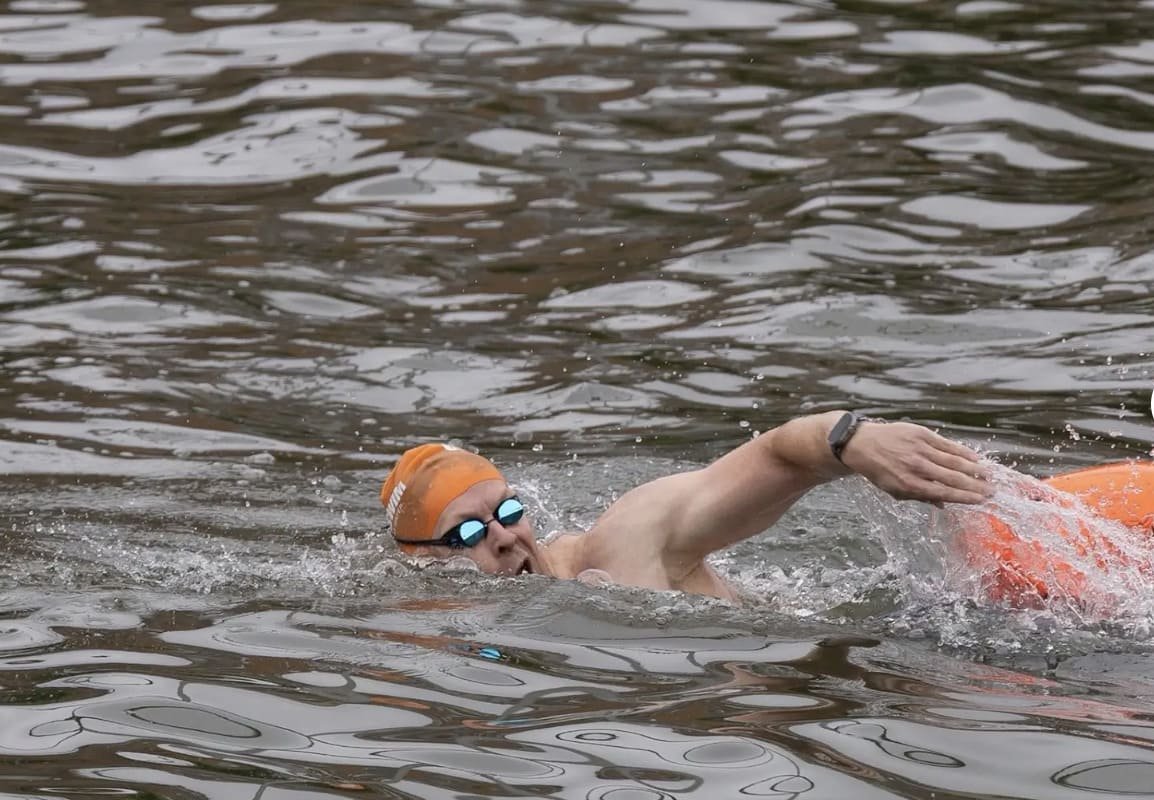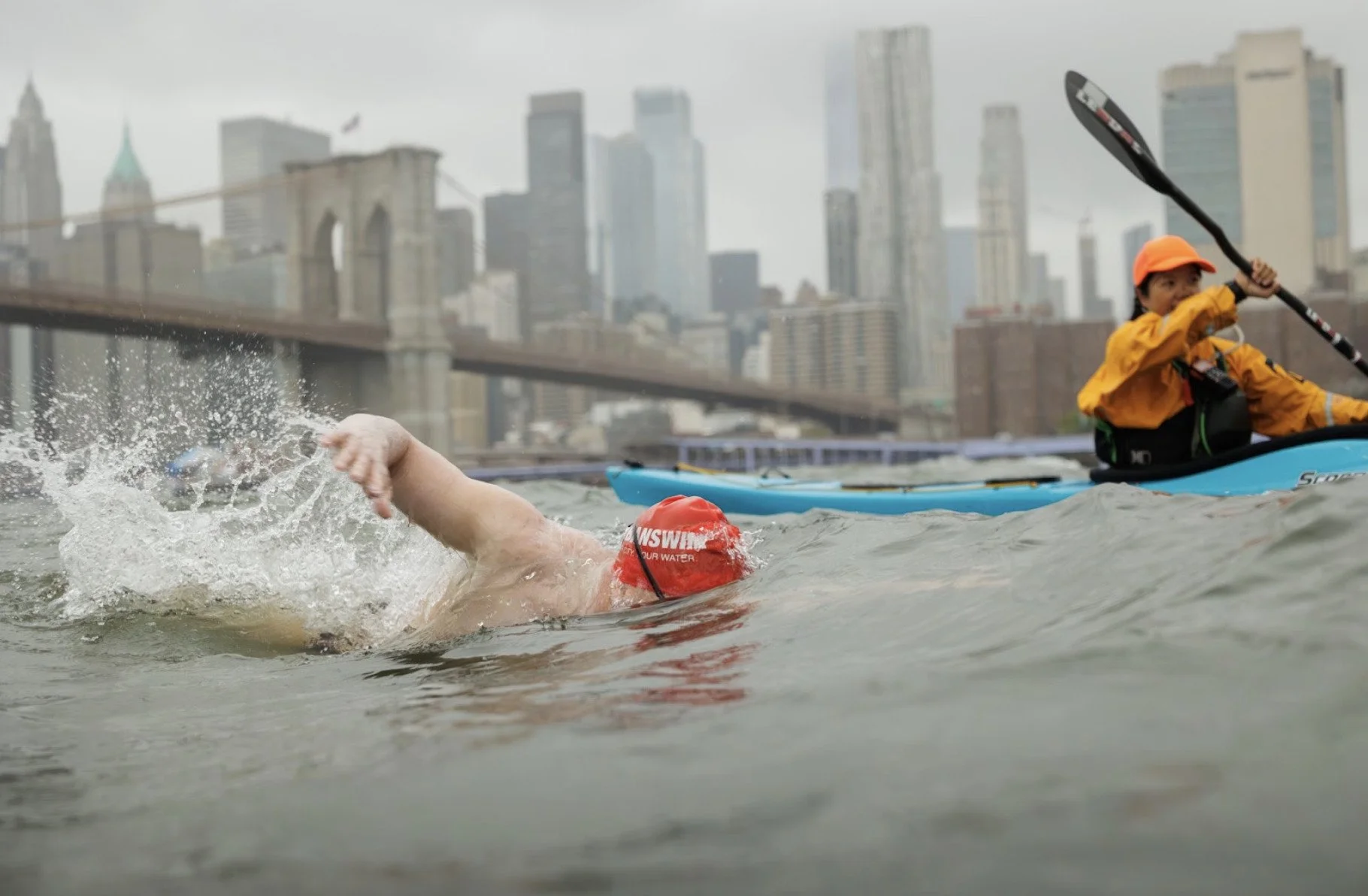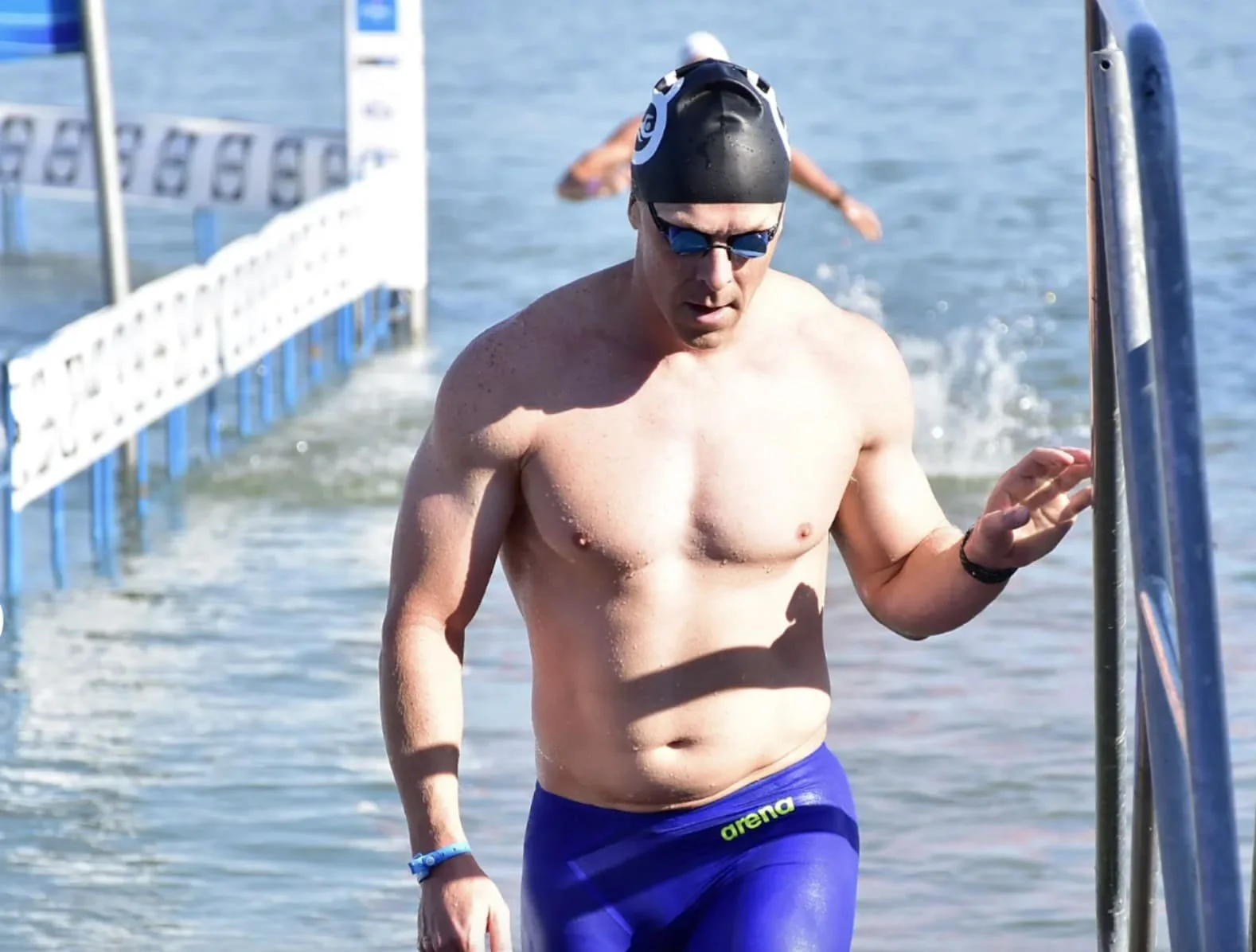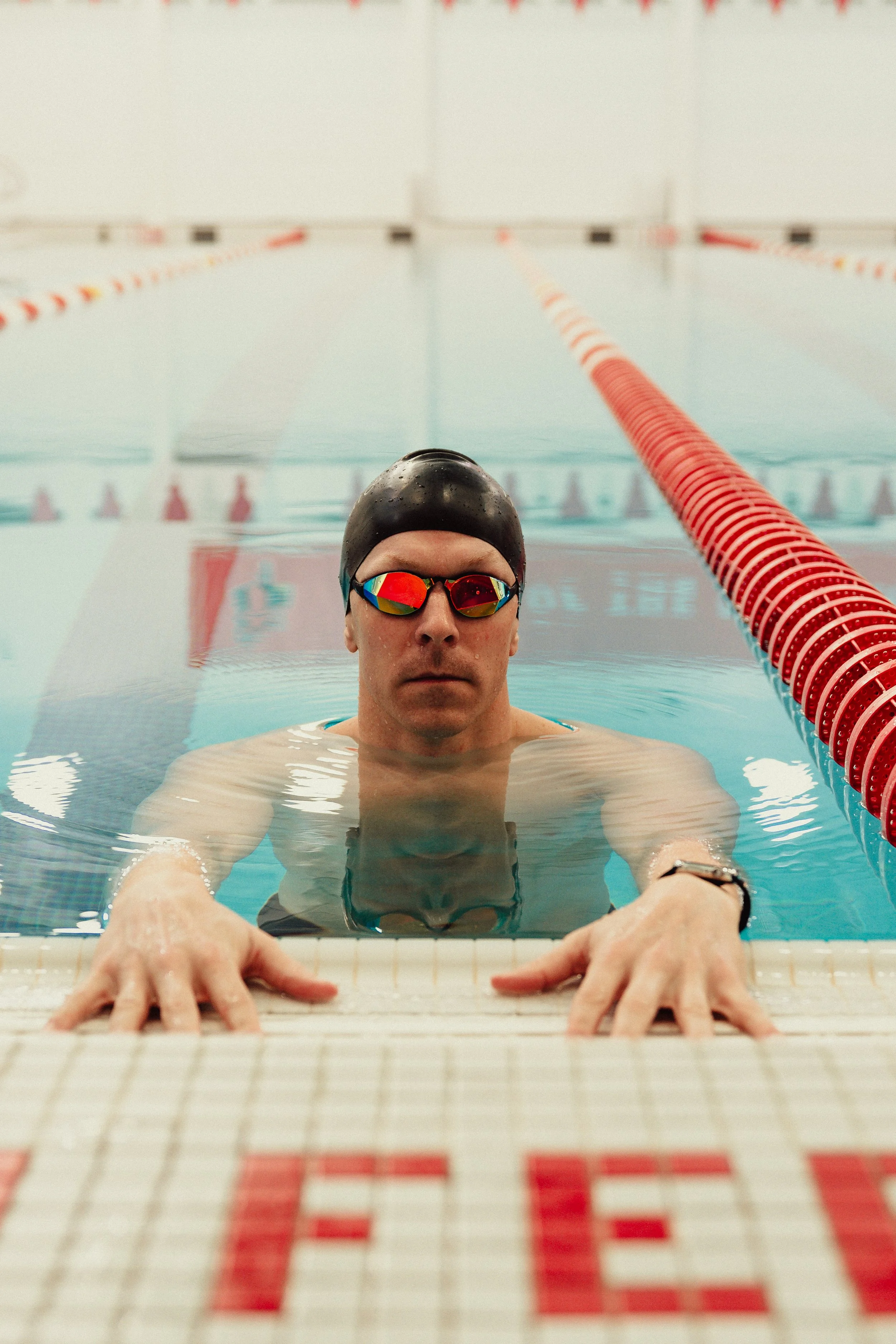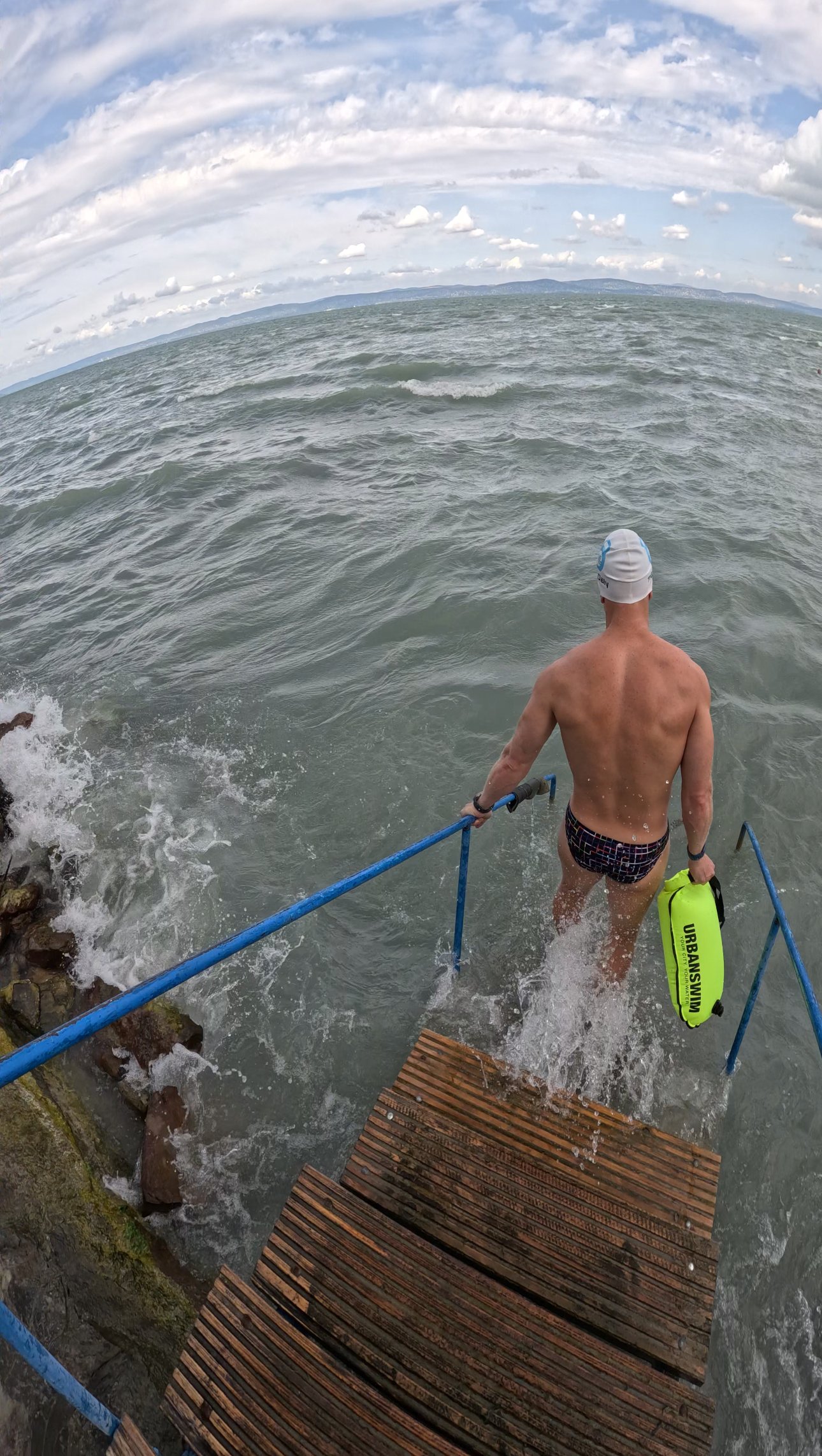Swim Workouts for Triathletes: Build Speed and Endurance for Race Day
/Triathlon swim training is often the most overlooked piece of a triathlete’s preparation - yet it’s the first leg of every race and the one most likely to spike your heart rate, disrupt your pace, or shake your confidence.
Whether you’re learning to swim for triathlon, fine-tuning your triathlon swim technique, or looking for the best swim workouts for triathletes, this guide gives you a full system to build both speed and endurance - plus videos from my own training to keep it practical and personal.
Why Swim Training for Triathlon Requires a Different Approach
Pool swimming and triathlon swimming aren’t the same. You don’t have walls, you’re often sighting every few strokes, and you have to deal with chop, currents, and sometimes cold water. Add 50+ people around you, and things get even more unpredictable.
To perform well in a swim triathlon, you need:
A smart triathlon swim training plan
Efficient swimming technique for triathlon
A steady aerobic engine and control over your pacing
Comfort and confidence in open water
| Workout Type | Purpose | Example Focus |
|---|---|---|
| Technique | Improve stroke efficiency and body position | Catch Up Drill, Single Arm Stroke |
| Endurance | Build aerobic base | Long sets (100–400 repeats) |
| Threshold/Speed | Raise sustainable race pace | 50s and 100s with short rest |
| Open Water Simulation | Practice sighting, pacing, buoy turns | Continuous swims, tempo intervals |
Pro tip: Learning to swim for a triathlon isn’t about volume—it’s about purpose.
Best Swim Workouts for Triathletes
Here are three triathlete swim workouts I use in my own coaching. You can rotate through these each week or structure them into a full triathlon swim training plan.
Workout #1. Triathlon Technique & Form Set
Goal: Refine your swimming form for triathlon
- 4x100 warm-up (swim, kick, pull, drill)
- 4x50 catch-up drill
- 4x50 3-3-3 drill (3 strokes one arm, 3 the other, 3 full)
- 4x50 fingertip drag
- 4x100 smooth swim w/ pull buoy and/or paddles
- 200 easy cooldown
Ideal for early-season training or beginner triathletes.
Workout #2. Endurance Threshold Set
Goal: Build stamina for longer swim triathlon events
- 300 easy warm-up
- 3x400 goal pace (20–30s rest)
- 4x100 descending pace (1–4)
- 4x50 w/ sighting every 6–12 strokes
- 200 easy swim or backstroke to recover
Great for Half Ironman or Olympic triathletes building aerobic strength.
Workout #3. Speed & Race Simulation Set
Goal: Prep for a fast start and a strong finish
- 400 warm-up (include drills)
- 8x50 sprints @ :50
- 6x100 at race pace (threshold effort), 15s rest
- 4x25 build effort from easy to fast
- 200 kick set (with or without board)
- 100 easy cooldown
Add this set closer to race day to sharpen speed.
Real-World Training
I’ve documented some of my own open water swim training to help you apply these concepts faster.
My 5K Open Water Prep
Here’s a look at one of my final open water workouts leading up to a 5K race. Most of my training for this event focused on Zone 4 aerobic efforts to build lactate tolerance and swim economy, paired with technique work and low-intensity drills.
Focus: Aerobic conditioning + technique during race prep
This balance between endurance and efficiency helped me hold a stronger threshold pace with less effort - exactly what triathletes need for long races.
Stay Relaxed in Open Water: Mindset & Tempo
One of the most common issues I see in new triathletes? Tension. They fight the water instead of swimming through it.
Here’s how I coach my athletes to stay relaxed and confident in open water, even when conditions aren’t perfect:
Key reminders:
Trust your stroke
Don’t muscle through chop—adjust tempo to match conditions
Relax your neck, jaw, and hands
Yield to the movement of the water, don’t fight it
The calmer you are, the more efficient and fast you’ll be.
Open Water Mistakes to Avoid
Focus: Beginner tips + race-day errors to fix in training
Even strong pool swimmers struggle in open water because of poor prep. This video breaks down the top mistakes I see
Top Mistakes:
Undertraining – especially for the distance. You can’t fake fitness.
Not knowing the course – sighting and turns take practice.
Fueling errors – don’t try new nutrition on race day.
Skin chafing & sunburn – avoidable with good prep.
What Equipment Do You Need?
If you’re new to triathlon swimming, here are a few smart training tools to consider:
Best swim fins for triathlon training: Short floating fins for ankle mobility
Pull buoy: Helps isolate upper body technique. Buoys your legs.
Paddles: Amplifies technique flaws. Builds pull strength (use sparingly)
Tempo trainer: Helps dial in cadence for different paces and distance, and rougher water
Safety buoy: Non-negotiable for open water practice
Bonus: Open Water Simulation Workout
When possible, train in open water once a week.
Example:
5–10 min easy warm-up
4x3 min strong effort, 1 min float
Practice sighting + holding your line
Finish with 5 min smooth swim
Swim with a buddy or coach, and use a brightly-colored safety buoy.
Final Thoughts: Triathlon Swimming for All Levels
You don’t need a swim background to crush the triathlon swim. Whether you're a beginner learning how to swim for a triathlon or an experienced athlete aiming to improve pacing and efficiency, the formula is the same:
Train consistently
Focus on technique
Blend pool and open water
Apply what you practice on race day
Join Me for Open Water Swim Events
Ready to apply what you've learned? Join me at this season’s 2025 open water swim events and train alongside other motivated athletes. Whether you're racing or just want to build open water experience, I’d love to swim with you.
Train smart. Swim strong. See you in the water.


